Hiking in Montenegro is a feast for the eyes, but what if it could also be a feast for your stomach? The mountains, meadows, and forests of this beautiful country are teeming with edible treasures, waiting to be discovered by the observant hiker. Foraging-the practice of gathering wild food-connects you to the landscape in a uniquely rewarding way, turning a simple walk into a delicious adventure.
Foraging Permits
If you’re planning to pick in Montenegro’s national parks (Durmitor, Biogradska Gora, Lovćen, Prokletije, Skadar Lake), you’ll need a permit - 5€ for the day, 50€ for the year. Rangers do check, and fines aren’t cheap, so it’s worth sorting ahead of time through the Environmental Protection Agency or the park offices
Safety
Many edible plants have deadly look-alikes. Never rely on smell alone for identification. Always use multiple reliable field guides and consider hiring a local expert guide for your first foraging experiences. If in any doubt, leave it out.
Wild Berries
Montenegro's diverse elevation zones create perfect microclimates for wild berries, each with their own seasonal rhythm dictated by altitude and the Balkan continental climate.
Wild Strawberries (Fragaria vesca) - "Шумске јагоде" (Šumske jagode): These tiny gems thrive in the sunny clearings of Bjelasica's beech forests and along the forest edges of Komovi mountains between 800-1,400m elevation. Peak season runs from mid-May through July, depending on snowmelt. Local foragers know to look for them near old shepherd paths - the soil disturbance creates perfect growing conditions. In my years guiding here, I've found the sweetest specimens grow on south-facing slopes in the Kolašin area, where morning dew and afternoon sun create ideal conditions. Traditional Montenegrin families would make "šumska marmelada" (wild strawberry jam) - a prized delicacy saved for special occasions.
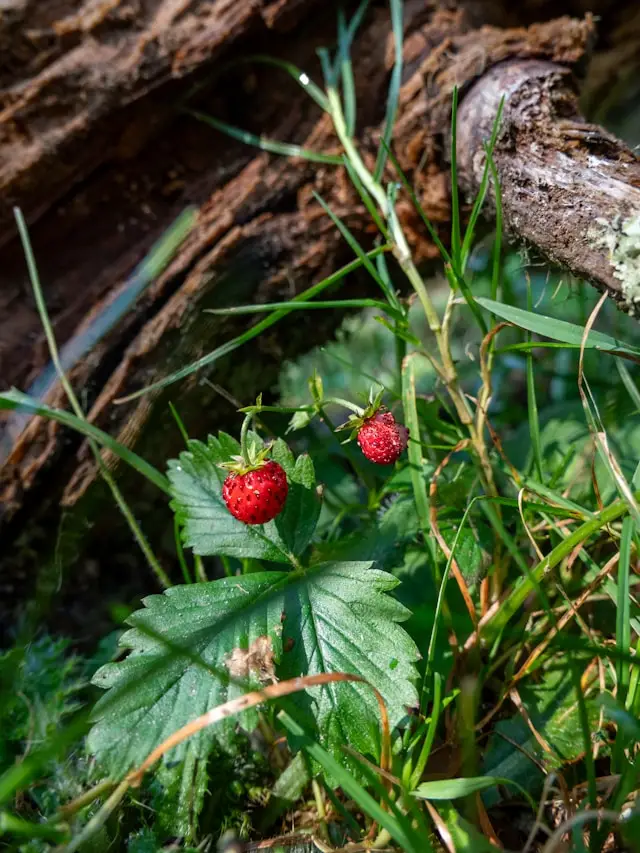
Wild Blueberries (Vaccinium myrtillus) - "Боровнице" (Borovnice): The crown jewel of Montenegro's high-altitude foraging, these grow abundantly above 1,200m in Durmitor National Park, particularly around Trsa and Vražje jezero, and throughout the Bjelasica massif above Biogradsko jezero. The season runs from mid-July through early September, with peak ripeness in August. Traditional shepherds would dry these berries for winter, calling them "planinska medicina" (mountain medicine) for their healing properties. I've learned from local katun (mountain hut) keepers that the best patches are often found on north-facing slopes where snow lingers longer, creating the acidic soil conditions blueberries love.
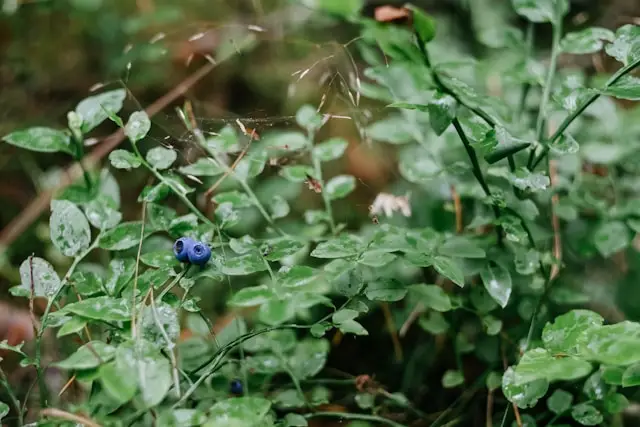
Blackberries (Rubus fruticosus) - "Купине" (Kupine): These familiar thorny bushes grow in abundance along paths and in disturbed areas throughout Montenegro's mid-elevation zones (400-1,000m), fruiting from late July through September. The coastal regions around Bar and Ulcinj see earlier ripening, while mountain valleys like Morača and Tara ripen later. Local tip: the juiciest berries grow along old logging roads in the Kolašin forests, where the partial shade keeps them from drying out during hot August days.
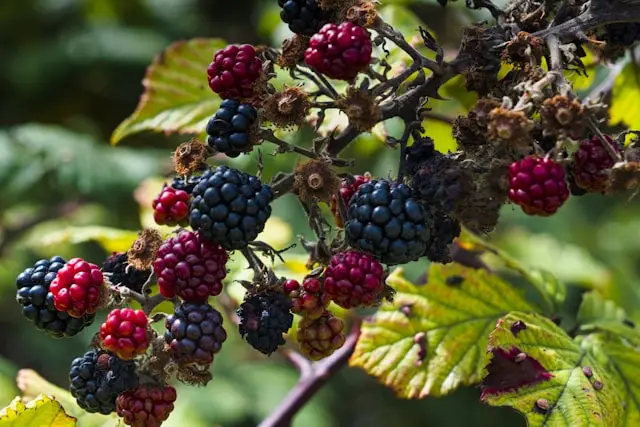
Greens and Herbs
Many common plants you'll walk past are not only edible but also deeply woven into Montenegro's traditional medicine and cuisine. The timing of harvest is crucial - spring herbs are best collected before the intense Balkan summer heat sets in.
Wild Garlic (Allium ursinum) - "Дивљи лук" (Divlji luk): Wild garlic carpets the shaded valleys of Morača, Tara, and the lower slopes of Bjelasica (600-1,200m) from mid-March through May, depending on snowmelt. The best patches I've found are in the beech forests near Kolašin, where the rich, moist soil creates ideal conditions. Local families traditionally harvest this in early April for "prolećna čorba" (spring soup), believing it cleanses the blood after winter. Crucial identification tip: Every part of the plant should smell strongly of garlic when crushed - this is your safety guarantee against toxic look-alikes like lily-of-the-valley.
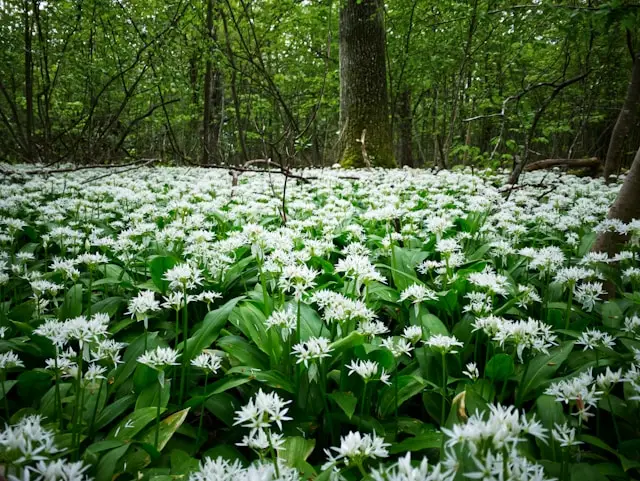
Nettle (Urtica dioica) - "Коприва" (Kopriva): Best harvested in early spring (March-April) before flowering, when the Balkan climate is still cool and the plants are tender. The prime locations are along stream beds in Durmitor's valleys and the fertile soils around Biogradsko jezero. Young nettle tops (first 4-6 leaves) are harvested by local grandmothers who make "kopriva čaj" (nettle tea) - a traditional spring tonic. Always use gloves and harvest in the early morning when the dew makes the stinging hairs less active.
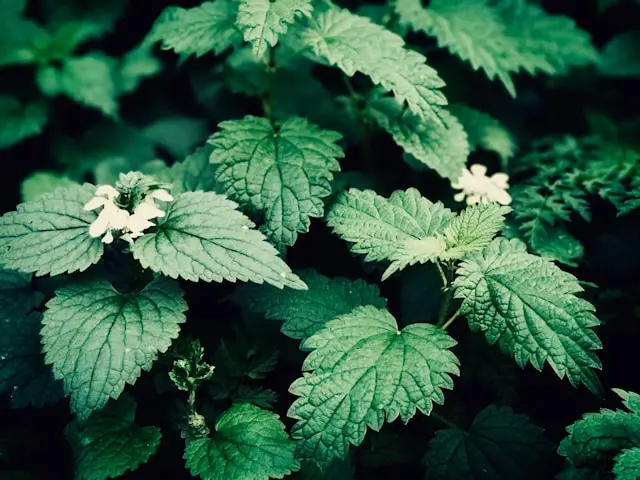
Wild Mint (Mentha species) - "Дивља нана" (Divlja nana): Abundant near streams throughout Montenegro's mountains, particularly along the crystal-clear waters of Tara River tributaries and around the springs of Durmitor. The season runs from May through September, with the most aromatic leaves harvested in early summer. Traditional katun keepers dry this mint for winter tea, and I've learned that the variety growing above 1,000m has a more intense flavor due to the cooler nights and intense UV exposure.
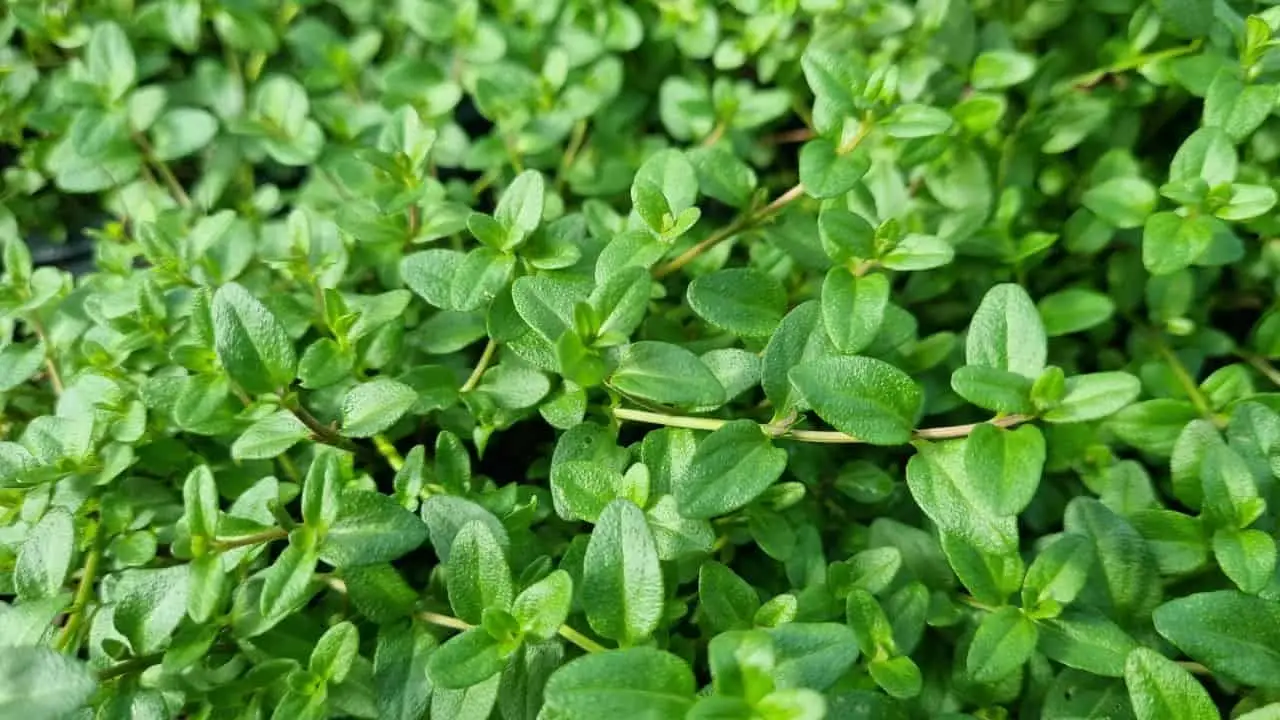
Lemon Balm (Melissa officinalis) - "Матичњак" (Matičnjak): Found in meadows and woodland edges throughout central Montenegro, particularly in the Kolašin and Mojkovac regions between 500-1,000m elevation. Peak harvest time is June-July before the summer heat diminishes the essential oils. Local beekeepers prize this plant - "matičnjak" literally means "queen's herb" - and traditional healers use it for calming tea. The best specimens grow in partial shade where morning sun and afternoon shade preserve the delicate lemon scent.
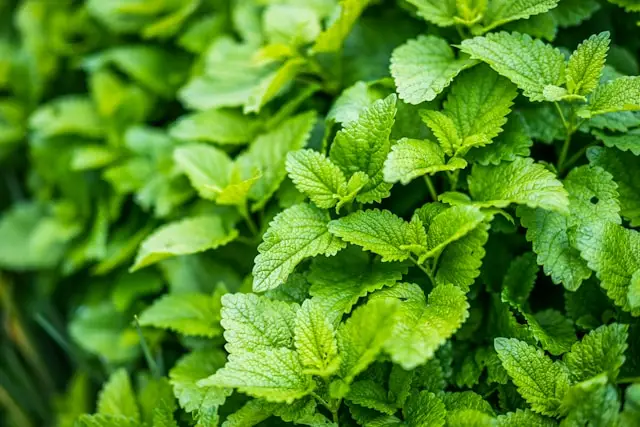
Fruits
Beyond the high-altitude berries, Montenegro's coastal regions and sun-warmed valleys offer their own sweet bounty, reflecting the country's unique position between Alpine and Mediterranean climates.
Figs (Ficus carica) - "Смокве" (Smokve): Wild fig trees thrive throughout the coastal belt from Herceg Novi to Ulcinj, and surprisingly, in the warm microclimates of central valleys like Zeta and around Podgorica up to 400m elevation. Two seasons of fruit: early summer "breba" (June-July) and main crop "smokve" (August-September). The sweetest wild figs I've found grow along the old Austro-Hungarian stone walls near Kotor, where the limestone reflects heat and creates perfect ripening conditions. Local families traditionally dry these for winter sweets, calling them "zimska slatkiša" (winter candy).
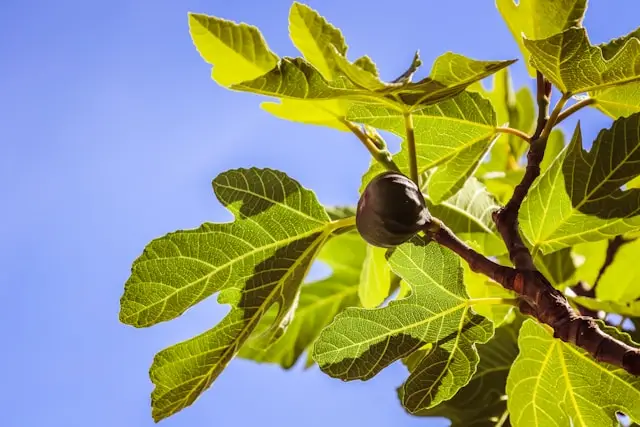
Pomegranates (Punica granatum) - "Шипак" (Šipak): Wild and feral pomegranate bushes dot the coastal hills and the warm Zeta valley, particularly around old monastery grounds and abandoned villages. The fruits ripen from October through November, with the coastal varieties ripening earlier due to the moderating influence of the Adriatic. Traditional belief holds that pomegranates growing near old churches have the most healing properties - a belief I've heard from elderly foragers in the Cetinje region.
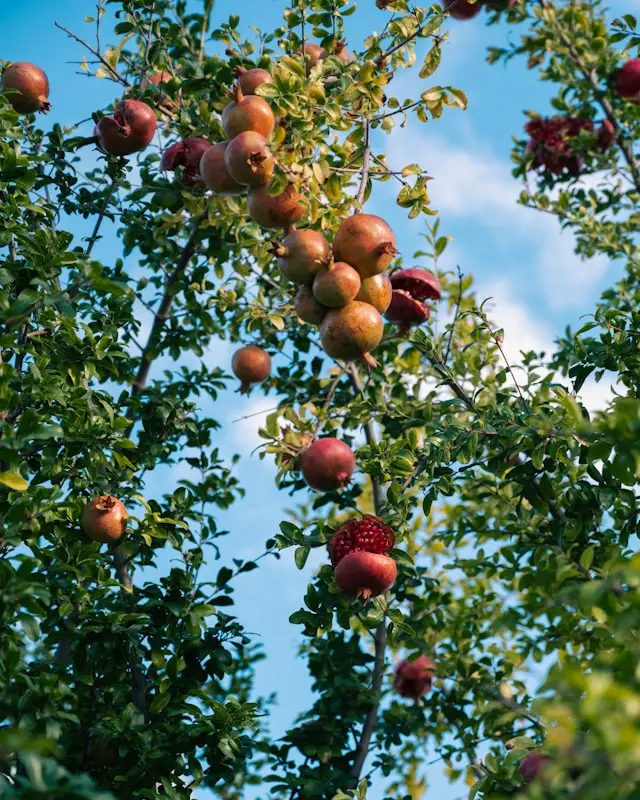
Wild Grapes (Vitis sylvestris) - "Дивље грожђе" (Divlje grožđe): Found climbing through coastal scrubland and central valley forests, these ancient vines produce small, intensely flavored grapes from September through October. The Skadar Lake region has particularly abundant wild vines, remnants of medieval vineyards. Local rakija makers prize these grapes for their concentrated flavor - one old distiller in Virpazar told me that wild grape rakija has "the soul of the mountain and the memory of the vine."

A Seasonal Foraging Calendar: Following Montenegro's Mountain Rhythms
Montenegro's foraging seasons are dictated by elevation and the unique Balkan climate pattern of wet winters, hot summers, and distinct spring/autumn transitions. Here's what I've learned from years of guiding and local knowledge:
| Season & Elevation | What to Look For | Best Locations |
|---|---|---|
| Early Spring (March-April) Below 800m |
Wild garlic (divlji luk), young nettle tops (kopriva), violet leaves, dandelion greens. Coastal areas see 2-3 weeks earlier harvest. | Morača valley, Zeta plain, coastal hills around Kotor |
| Late Spring (May-June) 800-1,200m |
Wild strawberries (šumske jagode), elderflowers, lemon balm (matičnjak), early mint. Mountain spring arrives 3-4 weeks after coast. | Kolašin forests, Bjelasica foothills, Durmitor valleys |
| High Summer (July-August) Above 1,200m |
Wild blueberries (borovnice) peak, high-altitude herbs, early mushrooms after thunderstorms. Best foraging weather before August heat. | Durmitor plateau, Bjelasica peaks, Komovi highlands |
| Late Summer (August-September) All elevations |
Blackberries (kupine) peak, wild grapes (divlje grožđe), figs (smokve), nuts, prime mushroom season after late summer rains. | Mixed elevations - coastal figs, valley grapes, mountain berries |
| Autumn (October-November) Below 1,000m |
Pomegranates (šipak), late grapes, mushrooms continue, rose hips. First frosts end the season in mountains. | Coastal regions, Skadar Lake area, central valleys |
Mushrooms
Montenegro's mixed forests are a paradise for mushroom hunters, especially after the late summer rains that typically arrive in late August. The country's diverse forest types - from coastal oak to high-altitude spruce - create perfect conditions for prized varieties like Porcini (Boletus edulis - "Вргањ"/Vrganj) and Chanterelles (Cantharellus cibarius - "Лисичарке"/Lisičarke).
Local mushroom hunters, called "gljivari," follow traditional knowledge passed down through generations. The best Porcini spots are closely guarded family secrets, often in the beech-fir forests of Bjelasica between 1,000-1,400m elevation.
Warning
Never eat a wild mushroom unless you are with an experienced local guide who can identify it with absolute certainty. Montenegro has several deadly species, including the Death Cap (Amanita phalloides) which can be confused with edible varieties.
Ethical and Sustainable Foraging Practices
Follow the 1-in-20 Rule: Take no more than 5% of any plant population in a given area. If there are fewer than 20 plants, take none.
- Harvest Responsibly: Cut plants with clean tools rather than pulling them up. For berries, take only ripe fruits and leave some for wildlife. For leaves, take only the outer or upper leaves, never more than one-third of the plant.
- Rotate Your Foraging Areas: Avoid returning to the same spot repeatedly to prevent overuse.
- Respect the Environment: Stay on marked trails to prevent soil erosion and habitat damage. Montenegro's mountainous terrain is particularly fragile.
Best Foraging Regions by Expertise Level
Beginner-Friendly Areas: The Kolašin region offers gentle terrain and abundant common species. The area around Biogradsko jezero is perfect for learning, with well-marked trails and diverse plant communities within a compact area.
Intermediate Foragers: Bjelasica's middle elevations (1,000-1,500m) provide excellent variety. The old shepherd paths between Vrutak and Jezerštica offer traditional foraging routes still used by locals.
Advanced Foragers: Durmitor's remote valleys and Prokletije's pristine forests offer the most diverse foraging, but require mountain experience. The area around Trsa in Durmitor is legendary among local foragers for its abundance.
Essential Foraging Gear - Local Style
Traditional Montenegrin foragers use a "berba torba" (picking bag) - a woven basket that allows plants to breathe. Modern essentials include: sharp knife, breathable basket or paper bags (never plastic), field guide, GPS or map, first aid kit, and a camera for documenting uncertain plants. Local tip: bring a small towel for cleaning hands and a water bottle - foraging is thirsty work in the Balkan sun.
Foraging in Montenegro offers an incredible way to connect with the country's pristine wilderness while learning skills that have sustained mountain communities for centuries. The key is patience, respect, and learning from those who've walked these paths before us.
Experience Authentic Montenegro Foraging
If you’d like to learn this the way I did - from the locals who know which slopes ripen first and which plants are worth the trouble - join one of our guided foraging hikes. It’s the best way to taste the land and the stories that come with it.
Disclaimer: This article is for educational purposes only. Always verify plant identification with multiple expert sources before consuming any wild plant.